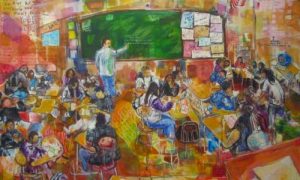PDF #18 – Content-Based Instruction A Relevant Approach of Language Teaching
This is an approach in which the teaching is organized around the content. Likewise, the principles of this approach are heavily rooted on the principles of communicative language teaching since they involve an active participation of students in the exchange of content.

This article reflects upon Content-Based Instruction as a relevant language
teaching approach, its background, the definition of the concept, and its principles. Moreover, the article reports on this method’s distinctive characteristics and its main models. Additionally, a lesson plan on this method with its materials is provided. Finally, a set of conclusions and implications is also discussed.
The focus of a CBI lesson is on the topic or subject matter. During the lesson students are focused on learning about something. This could be anything that interests them from a serious science subject to their favorite pop star or even a topical news story or film.
They learn about this subject using the language they are trying to learn, rather than their native language, as a tool for developing knowledge and so they develop their linguistic ability in the target language. This is thought to be a more natural way of developing language ability and one that corresponds more to the way we originally learn our first language.
While CBI can be both challenging and demanding for the teacher and the students, it can also be very stimulating and rewarding. The degree to which you adopt this approach may well depend on the willingness of your students, the institution in which you work and the availability of resources within your environment. It could be something that your school wants to consider introducing across the curriculum or something that you experiment with just for one or two lessons. Whichever you choose to do I would advise that you try to involve other teachers within your school, particularly teachers from other subjects. This could help you both in terms of finding sources of information and in having the support of others in helping you to evaluate your work.
After reading this article you can check important issues for ESL teachers on the section PDFs, and visit my YouTube channel.



